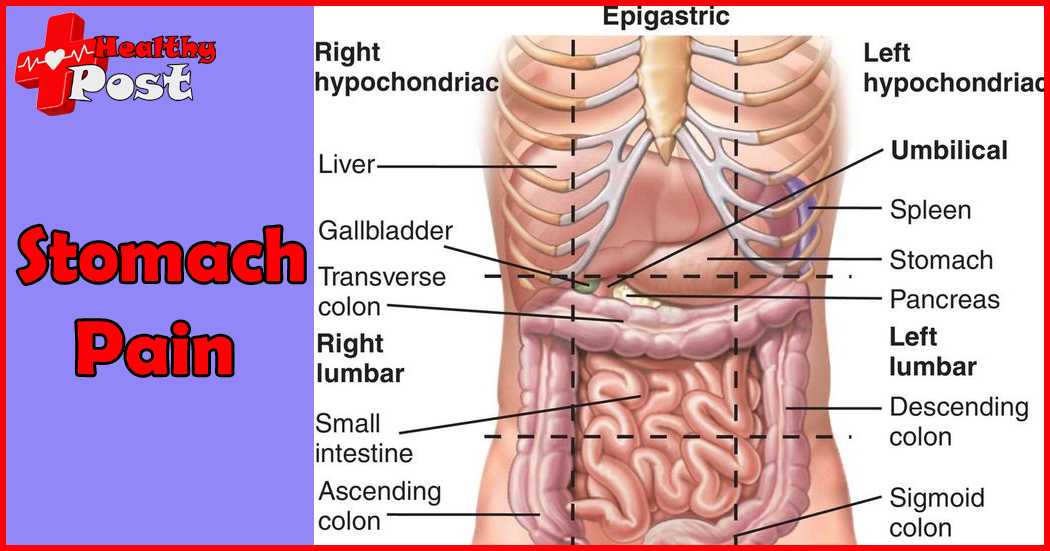
A picture tells you what causes stomach pain
Where does the stomach pain come from? Save it for later use. Special emphasis! Abdominal pain in different parts may represent different symptoms. This is for preliminary reference only!
right upper abdomen
Contains the liver and gallbladder, and pain in this area is often associated with them.
1. Sudden severe pain in the right upper abdomen after eating greasy food and radiating to the right shoulder. This may be gallstones;
2. If there is severe pain or dull spasm that radiates to the right shoulder and back and lasts for several hours, it may be cholecystitis.
Upper abdomen
Contains the duodenum, the first part of the small intestine, and most of the pancreas.
1. Pain in the mid-upper abdomen that intensifies significantly between meals or at night, but can be relieved by eating. This may be a symptom of duodenal ulcer.
2. If you often feel pain that radiates to your back and is aggravated by eating, especially high-fat foods, this may be a sign of pancreatitis. left upper abdomen
Most of the stomach is concentrated in the left upper abdomen, and it usually helps us digest the food we eat through constant peristalsis.
1. If pain occurs here, accompanied by nausea or vomiting, it may be a sign of gastritis;
2. If it is severe burning pain when the stomach is empty, it may be caused by gastric ulcer.

Mid abdomen
Including the large intestine and small intestine, it is an important part of the digestive system. Pain here usually indicates colitis, colon polyps, etc.
1. If you have mid-abdominal pain and cramping, along with severe diarrhea, fatigue, fever, and weight loss, it may be cause by inflammatory bowel disease.
2. If the pain is accompanied by vomiting and the inability to pass gas or defecate, this may be an early sign of small intestinal obstruction.
Left and right abdomen
Mainly the large intestine, and the deeper layers include the kidneys. Among them, the descending colon on the left side of the abdomen is very critical.
1. Persistent pain accompanied by abdominal tenderness, fever, nausea and vomiting are the most typical symptoms of descending colon inflammation.
2. If the pain radiates to the back and is accompanied by fever, chills, or even diarrhea and nausea, it may be a kidney infection;
3. Radiating to the lower abdomen and accompanied by severe wave-like pain, it may be kidney stones.
Lower abdomen
Generally close to our bladder and reproductive organs
1. Abdominal cramps, accompanied by burning and pain when urinating, and changes in the color of the urine (such as turning red), may indicate bladder infection, bladder stones or even bladder cancer.
2. If abdominal pain is accompanied by severe pelvic pain that lasts for several months, this may be a common symptom of some problems with the reproductive organs and should not be take lightly.
Right lower abdomen
Containing primarily the appendix, it is a small organ that stores useful bacteria, promotes good digestion, and supports the immune system.
1. Acute pain in the right lower abdomen, loss of appetite, nausea, vomiting and fever are the most common symptoms of appendicitis and require immediate medical attention.
2. If the pain worsens during urination and there is occasional blood in the urine, you need to be alert to prostatitis and urethritis.
left lower abdomen
Mostly composed of large intestine
1. Pain accompanied by cramps, bloating, excessive flatus, diarrhea or constipation may be symptoms of irritable bowel syndrome.
2. If the baby of gestational age has pain in both lower abdomen and irregular vaginal bleeding, be alert to ectopic pregnancy #Abdominal Pain # tummy pain

12 thoughts on “A picture tells you what causes stomach pain”